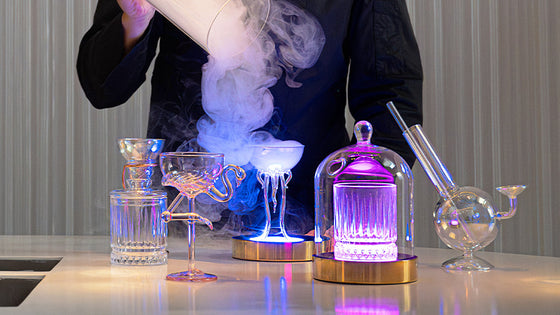How can you get started with the pairing of flavours in your cocktails?
It’s easy to feel intimidated by the thought of attempting to build original cocktails, and for very understandable reasons.
After all, the finest cocktails are based on finely balanced elements. In a way, being a mixologist – even a deeply amateur one – can feel like being a mechanic working on a car; the elements of a given cocktail are akin to the components of an engine, and if just a single ingredient is out of whack, the entire cocktail might not work as a drink.
But of course, this would be a rather short blog post if we simply said, “leave cocktail flavour mixing to the professionals”. That is especially so given the existence of the Flavour Blaster MINI, which stands as testament to the fact that fabulous cocktail taste sensations really can be created at home by almost anyone.
So, if you want to know how to pair flavours to excellent effect in your cocktails, what are some of the principles you need to be familiar with?
You could, of course, simply start with a familiar template…
While we touched on the notion above that it can take just one element of a given cocktail being ‘wrong’ for the entire drink to feel wrong, it also stands to reason that those just getting into the mixing of cocktail flavours have to start somewhere.
That “somewhere” might be the re-jigging of an existing favourite, and it’s true that a willingness to experiment is a key requirement for amateur mixologists. In any case, just because you can find certain cocktail recipes online, it doesn’t automatically follow that these will necessarily work well.
The same goes for the flavour pairing recommendations that can be easily found in online articles via a Google search. Yes, we could tell you that apple, for instance, tends to go particularly well with almonds, caramel, or chestnut, or that great options to pair with orange include banana, hazelnut, pomegranate, vanilla, and walnut. Or, looking away from fruits, you might fancy trying almond with honey, coffee, or fig in your next cocktail.
You get the idea. We can put forward possibilities for your own experimental (or not-so-experimental) cocktail mixing, but that’s a slightly different thing to knowing how to pair flavours in cocktails for yourself.
So, what other guiding principles could aid your cocktail mixing?
As we have already referenced in this article, so much of the successful mixing of cocktail flavours comes down to the savvy balancing of various elements.
One thing that will likely assist you in achieving such balance, is being mindful of the varying levels of strength of different flavour pairings. It might be the case that a certain ingredient pairs strong with lemon, for instance, but weak with lime.
It’s often better to go for strong pairings over weak pairings, but of course, you might have personal preferences further influencing your decisions here. In terms of ensuring compatibility across all the ingredients you might wish to use in your cocktail, aiming for a strong pairing may not be the optimal choice for you every time.
Another sound principle to follow is that of making sure the various flavours you use in your cocktails nicely complement each other. There might be five flavours that you love, and that you are therefore tempted to include in one cocktail, but it really does help to – as they say – ‘keep it simple, stupid’ (KISS). When you are devising flavour pairings, subtlety and nuance matter, with not every flavour needing to be ‘front and centre’ as far as the imbiber’s taste experience is concerned.
There you have it – a set of guidelines that should enable you to build your competence and confidence in cocktail flavour mixing, even if it’s something you scarcely have experience of.
Be prepared to try things out and to keep an open mind to some of the flavour combinations that you might imagine ‘couldn’t possibly work’, and you may well be pleasantly surprised. And don’t forget the potential role of the Flavour Blaster MINI in making your next cocktail party one that every attendee will remember for all the right reasons. It really could be time for you to “pull the trigger”!
















